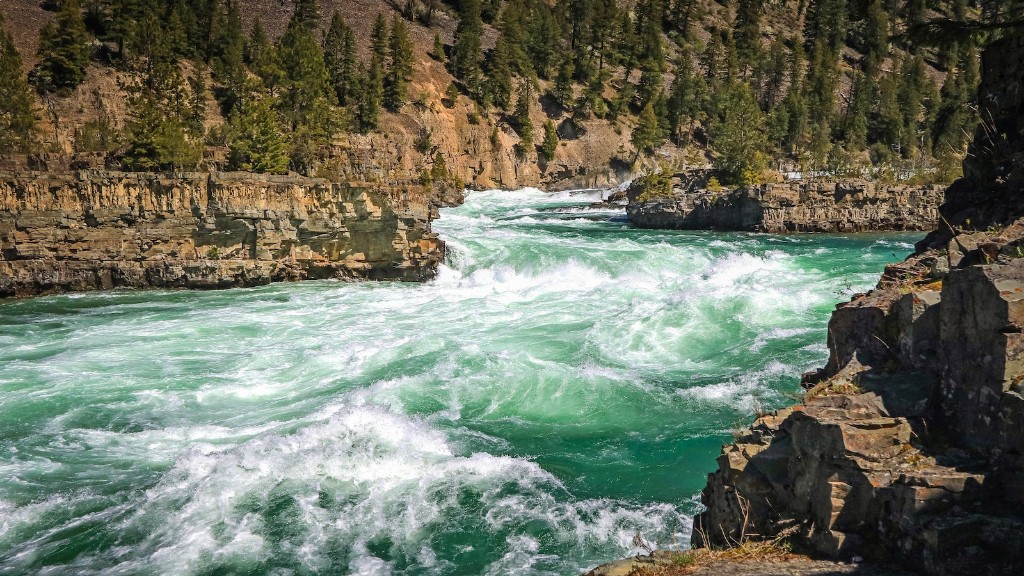The Mississippi River is the second longest river in the United States and an important body of fresh water and source of nutrients for communities living on its shores. Communities in the Midwest rely heavily on this river for irrigation, power generation, and general economic development. However, the river’s health is threatened by the introduction of chemicals and pollutants into the First Natural Watershed. More than 20 million pounds of chemicals and pollutants, including nitrogen, phosphorus, mercury, and lead, are deposited into the Mississippi River annually.
The Mississippi River has been known as a highly polluted ecosystem due to the presence of industrial facilities along its waterways and large cities with sewage input. Also, because its watershed encompasses 40 percent of the United States land area, it receives the runoff of a host of potentially hazardous agricultural and industrial chemicals, sediments, and other pollutants.
Nitrogen and phosphorus levels in the Mississippi River are a major concern due to their impact on aquatic life. Nitrogen and phosphorus contained in agricultural runoff, from fertilizers and animal waste, are the primary source of nitrogen and phosphorus that enter the water system. Studies have shown that the presence of these pollutants can modify habitats and reduce available oxygen for aquatic species. It is also believed that nitrogen and phosphorus-rich runoff can result in toxic algal blooms in the river.
Mercury and lead are also found in the Mississippi River. Over the past decade, mercury contamination in the river’s fish has become a major source of human health concern. The consumption of fish from the river can cause mercury poisoning and other adverse health effects such as permanent brain damage, kidney damage, and death. Lead is another dangerous chemical found in the Mississippi River. Lead can cause serious health problems in adults and children, including decreased cognitive functions, unless individuals limit their exposure to the metal by avoiding contaminated water or fish consumption.
Pollution of the Mississippi River has posed a serious threat to the environment and to the health of its inhabitants for many years. Stricter regulation of industrial discharges, as well as improved agricultural practices, are necessary to better manage the pollution of the river and its watershed. Efforts are also being made to reduce the runoff of chemicals and pollutants into the river. The U.S. Environmental Protection Agency, the U.S. Geological Survey, and state and local governments are working together to improve the quality of water in the Mississippi River.
Urbanization
Urbanization is also a major cause of water pollution in the Mississippi River. Many cities are situated adjacent to the river, receiving sewage inputs and other pollution sources that can contribute to its water degradation. Additionally, urban runoff, caused by litter, chemicals, oils, and other materials, offers additional sources of water pollution in the Mississippi River.
To reduce urban-related pollution, many cities have implemented stormwater management plans that utilize green infrastructure such as cisterns, retention ponds, and bioswales. These features capture, storage, and treat stormwater in order to reduce water pollution caused by urban runoff before it reaches the river. Additionally, cities are working on reducing the amount of nonpoint source pollution, such as illicit discharges and overland flows, that are common in urban areas.
Cities are also trying to reduce their energy and resource needs to create a healthier urban environment and reduce water pollution caused by their activities. Cities are investing in renewable energy, such as solar and wind, and encouraging their residents to reduce their individual energy and water waste. These efforts are helping to reduce the amount of pollutants entering the Mississippi River.
Agriculture
Agricultural runoff is a major contributor to the pollution of the Mississippi River. Nitrogen, phosphorus, and other chemicals can all enter the river through agricultural runoff, resulting in elevated levels of contamination in the river. Agricultural runoff is also one of the primary sources of phosphorous and nitrogen in the river, which can lead to eutrophication and other ecosystem imbalances.
In order to reduce agricultural pollution, farmers are encouraged to use cover crops, terracing, and incorporation of crop residues. Cover crops, such as winter rye, can be planted in the winter and spring to reduce nitrogen and phosphorus runoff. Terracing, also known as contour farming, slows the flow of water, reducing the amount of runoff that enters the river. Crop residues, such as straw, can be left on the soil to reduce the amount of phosphorous and nitrogen leached into the river.
Farmers are also encouraged to use precision agriculture practices to improve irrigation efficiency. Drip irrigation systems, for instance, reduce the amount of water used and minimize the amount of runoff that enters the Mississippi River. Additionally, farmers can use cover crops to fix nitrogen from the atmosphere and reduce the amount of nitrogen agriculture contributes to the river.
Livestock
Livestock is also a major source of pollutants for the Mississippi River. Animal waste from farms and dairy operations can contain significant amounts of nitrogen and phosphorus, which can enter into the river through runoff or other sources. Additionally, fertilizer and manure runoff can also carry other pollutants, such as toxins, heavy metals, and antibiotics, into the river.
In order to reduce livestock pollution, farmers are encouraged to practice management practices that reduce the amount of runoff into the river. Crop rotation, for instance, reduces the amount of nitrogen fertilizer applied to the soil and can reduce the amount of nitrogen that runs off into the river. Farmers are also encouraged to spread manure on lands far from the river to reduce the potential negative impacts of manure runoff.
The use of buffer strips is another management practice that can help reduce livestock-related pollution. These strips of land can act as barriers between agricultural fields and the river, preventing runoff and animal waste from entering into the river. Additionally, farmers can implement riparian buffers around agriculturally impacted streams. These buffers can absorb pollutants and infiltrate nutrients back into the soil, protecting the river from contaminants.
Sewage
The last source of pollution to discuss is sewage. Sewage is wastewater that is generated from cities and wastewater treatment plants. These sources of wastewater can contain a variety of pollutants, including nutrients, viruses, and bacteria, which can enter the river and degrade its quality. To reduce the amount of sewage entering into the river, cities are investing in treatment facilities, such as sewer plants, that can capture and treat sewage.
Sewage treatment helps reduce the amount of nutrients and other pollutants that enter into the river, which can improve water quality. Additionally, sewage treatment helps reduce the populations of infectious microorganisms, reducing the amount of disease in those living near the river. Cities are also investing in green infrastructure, such as bioretention systems, that can capture and treat urban runoff to further reduce the amount of pollutants entering the river.
The Mississippi River is a vital body of water for many communities in the Midwest. Unfortunately, the river has been degraded over the years due to the accumulation of pollutants and chemicals. To protect the river, it is necessary to reduce the amount of pollutants entering the river by improving agricultural and industrial production practices, investing in green infrastructure, and reducing urban impacts on the river. With collective effort and investment, the Mississippi River can be once again restored to a healthier state.




